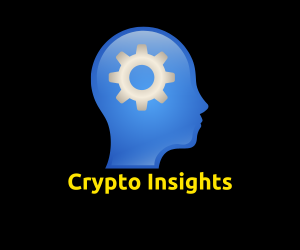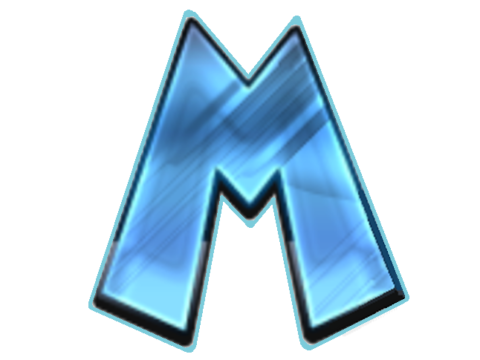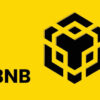
As blockchain technology continues to evolve, interoperability and scalability have emerged as two of the most critical challenges for developers and users alike. Polygon (formerly Matic Network), a Layer 2 scaling solution, has positioned itself as a key player in the quest to scale Ethereum while also providing a framework for integrating with other blockchains. Polygon enhances Ethereum’s capabilities, reduces congestion, and opens the door to cross-chain compatibility, making it a powerful tool for decentralized applications (dApps) and decentralized finance (DeFi) platforms.
In this article, we’ll explore how Polygon integrates seamlessly with Ethereum, how it supports interoperability with other blockchains, and the benefits of this cross-chain functionality for the blockchain ecosystem.
What is Polygon?
Polygon is a Layer 2 scaling solution built to improve the performance of Ethereum by processing transactions off-chain while still benefiting from Ethereum’s security. By reducing congestion on the Ethereum mainnet, Polygon provides faster transactions at a lower cost, making decentralized applications more accessible to everyday users.
Polygon offers a modular framework that allows developers to launch scalable blockchains and Layer 2 chains, all of which are compatible with Ethereum. Its ecosystem includes a range of technologies like sidechains, Plasma chains, and Rollups, all designed to provide scalable, cost-effective solutions.
How Does Polygon Integrate with Ethereum?
Polygon is designed to work alongside Ethereum as a scaling solution. Here’s how it integrates with Ethereum and enhances the network:
1. Ethereum Compatibility
One of Polygon’s key strengths is its full Ethereum compatibility. Developers who build dApps on Ethereum can seamlessly migrate their applications to Polygon without rewriting their code. Polygon uses the Ethereum Virtual Machine (EVM), which means it supports all of Ethereum’s existing tools, wallets, and smart contracts.
For example:
- dApp developers: Applications built on Ethereum can be deployed on Polygon with minimal effort, allowing developers to benefit from faster, cheaper transactions while retaining Ethereum’s security.
- DeFi platforms: Major DeFi platforms like Aave, SushiSwap, and Uniswap have integrated with Polygon to reduce transaction fees for users without sacrificing functionality.
This compatibility makes it easy for Ethereum-based applications to scale using Polygon while staying connected to Ethereum’s security and decentralization.
2. Bridge for Asset Transfer
Polygon’s integration with Ethereum is made possible through its Polygon Bridge, which allows users to transfer assets between Ethereum and Polygon easily. The bridge ensures that tokens and assets can move freely between the two networks, maintaining their value and usability across both chains.
- How the Polygon Bridge Works:
- Users send assets (such as ERC-20 or ERC-721 tokens) from Ethereum to Polygon by locking them in a smart contract on Ethereum’s mainnet.
- Once locked, the equivalent amount of tokens is minted on Polygon, allowing users to interact with dApps on the Polygon network.
- When users want to return their assets to Ethereum, they can burn their tokens on Polygon and unlock the original assets on Ethereum.
This seamless transfer process ensures that users can enjoy Ethereum’s security while benefiting from Polygon’s speed and lower gas fees.
3. Layer 2 Scaling with Plasma and Rollups
Polygon utilizes Plasma chains and Rollups to increase Ethereum’s transaction throughput. These technologies allow most transactions to take place off-chain, reducing congestion on the Ethereum mainnet.
- Plasma Chains: Plasma chains enable Polygon to process a large volume of transactions off-chain while settling only the final state on Ethereum. This reduces gas fees and increases scalability.
- Optimistic Rollups and ZK-Rollups: Rollups bundle transactions and submit them to Ethereum as a single proof, reducing the load on Ethereum’s mainnet while maintaining security.
These scaling solutions enable Polygon to provide Ethereum users with faster transactions at significantly lower costs, without compromising security.
Cross-Chain Interoperability: How Polygon Integrates with Other Blockchains
Polygon isn’t limited to just Ethereum. As blockchain technology continues to grow, interoperability between different blockchains is becoming increasingly important. Polygon’s architecture is built to support cross-chain functionality, allowing assets and applications to move freely between multiple blockchain ecosystems. Here’s how Polygon integrates with other blockchains:
1. Polygon SDK for Custom Blockchains
The Polygon SDK is a modular framework that allows developers to create their own blockchain networks, either as standalone chains or Layer 2 chains connected to Ethereum. The SDK is flexible, enabling developers to create networks with their own consensus mechanisms and governance models.
- Standalone Chains: These are independent blockchains that use their own security and governance but are compatible with Ethereum via Polygon’s interoperability features.
- Secured Chains: These Layer 2 chains rely on Ethereum’s security while providing faster and cheaper transactions for their users.
The Polygon SDK allows these custom chains to be interoperable with each other and the Ethereum ecosystem, promoting a multi-chain future where assets can move freely between networks.
2. Cross-Chain Bridges
Polygon’s cross-chain bridges allow for interoperability between Ethereum, Polygon, and other blockchains. By leveraging bridges, users can transfer assets and data between different blockchains without relying on a single network, improving liquidity and scalability across the entire blockchain ecosystem.
Some notable cross-chain bridges include:
- Polygon Bridge: As mentioned earlier, this bridge facilitates asset transfers between Ethereum and Polygon.
- Polkadot Bridge: By connecting with the Polkadot ecosystem, Polygon enables seamless asset transfers between Ethereum, Polygon, and Polkadot.
- Binance Smart Chain Bridge: Users can transfer assets between Binance Smart Chain (BSC) and Polygon, further expanding Polygon’s cross-chain capabilities.
These bridges provide developers and users with flexibility, allowing them to interact with multiple blockchain networks and take advantage of the unique benefits each one offers.
3. Cross-Chain Token Swaps and Liquidity Pools
Polygon’s interoperability extends to cross-chain token swaps and liquidity pools. Through various decentralized exchanges (DEXs) and DeFi platforms, users can swap tokens between different blockchain networks. For example, users can easily swap Ethereum-based tokens for Binance Smart Chain tokens using cross-chain DEXs like SushiSwap or QuickSwap on Polygon.
Additionally, multi-chain liquidity pools enable liquidity providers to earn rewards across different blockchains, ensuring better liquidity and reducing slippage for traders. This cross-chain liquidity sharing is crucial for DeFi’s growth and enables Polygon to become a central hub for multi-chain DeFi activity.
The Benefits of Polygon’s Integration with Ethereum and Other Blockchains
Polygon’s ability to integrate with Ethereum and other blockchains provides several benefits for the broader blockchain ecosystem:
1. Scalability
Polygon improves Ethereum’s scalability by processing transactions off-chain and offering faster, cheaper alternatives. This reduces network congestion and high gas fees, making Ethereum more accessible to users.
2. Interoperability
Polygon’s cross-chain bridges and the Polygon SDK promote interoperability between different blockchain ecosystems. This ensures that users and developers can take advantage of the unique features of multiple blockchains without being limited to one network.
3. Lower Costs
By moving transactions off Ethereum’s mainnet, Polygon dramatically reduces gas fees. This makes it an attractive option for dApp developers, DeFi platforms, and NFT marketplaces, where transaction costs can otherwise be prohibitive.
4. Security
Polygon inherits Ethereum’s robust security model while providing additional scalability. For custom blockchains built on the Polygon SDK, developers can choose between Ethereum’s security or their own governance model, ensuring flexibility without sacrificing safety.
5. Faster Transactions
Thanks to its Layer 2 architecture, Polygon offers much faster transaction speeds than Ethereum’s mainnet. This is especially beneficial for dApps and DeFi platforms that require high transaction throughput to function efficiently.
Conclusion: Polygon’s Role in a Multi-Chain Future
Polygon’s seamless integration with Ethereum and other blockchains has positioned it as a critical player in the ongoing development of the blockchain ecosystem. By addressing Ethereum’s scalability challenges and promoting cross-chain interoperability, Polygon ensures that users can interact with multiple networks efficiently, affordably, and securely.
As blockchain technology evolves, Polygon will continue to serve as a bridge between Ethereum and other chains, fostering a multi-chain future where assets and applications can move freely between ecosystems. With its powerful SDK, cross-chain bridges, and scaling solutions, Polygon is set to play a leading role in the next phase of blockchain adoption.










